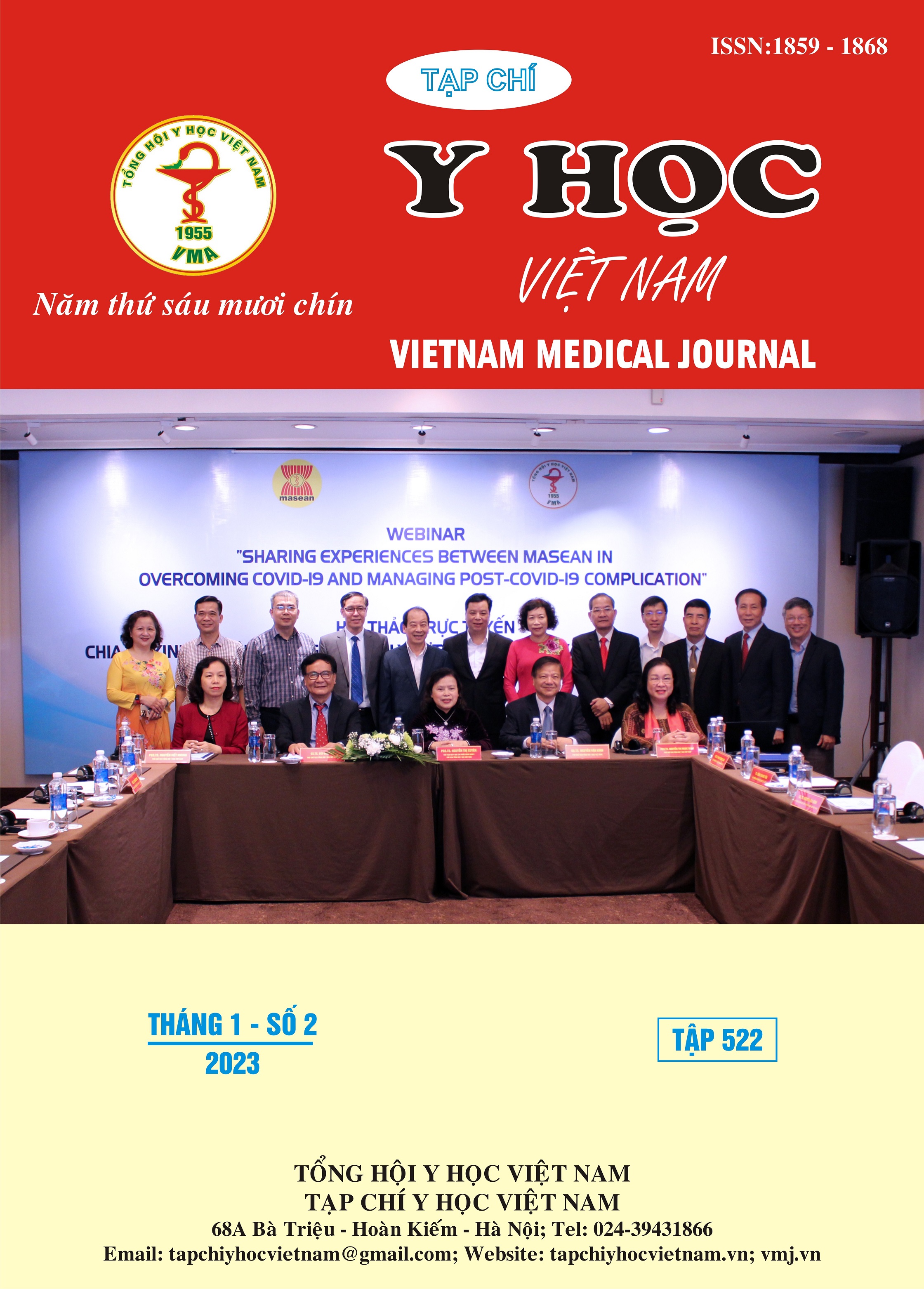PREDICTIVE VALUE OF BLOOD LACTATE FOR MORTALITY IN SEPTIC SHOCK PATIENTS TREATED AT THE NATIONAL HOSPITAL FOR TROPICAL DISEASES PERIOD 2018 - 2022
Main Article Content
Abstract
A cross-sectional descriptive study on 134 septic shock patients treated at the National Hospital for Tropical Diseases from the year of 2018 to 2022 to evaluate the predictive value of blood lactate for mortality in septic shock. Results: The average blood lactate concentration at the septic shock was 5,5 ± 4,0 mmol/l, the highest at 24 hours after shock and gradually decreased at 48 and 72 hours after shock. At the time of septic shock and after shock, the mean lactate concentration of the deceased group was significantly higher than that of the surviving group. Blood lactate is a good predictor for mortality in patients with septic shock, with an area under the curve (AUC) of 0,703, p<0,001 (95%CI: 0,605 – 0,801). Analysis between deceased and surviving groups showed that, the cut-off point of blood lactate is 3,95 mmol/l (J = 0,367), sensitivity 65,6% and specificity 71,1%. Univariate logistic regression analysis showed that patients with lactate concentration ≥ 3,95 mmol/l had a 4,6 times higher risk of death than patients with lactate concentration < 3,95 mmol/l (p<0,001). Lactate levels at 48 hours after shock had the best predicting mortality compared with at septic shock and 24 hours after shock with AUC = 0,818, p = 0,000 (95%CI: 0,711 – 0,924). Conclusion: Blood lactate level at 48h after shock is a good predictor for mortality. Therefore, it is necessary to test blood lactate many time during septic shock, especially at 48 hours after shock for prognosticating patient.
Article Details
Keywords
Septic shock, Blood Lactate, Prognostic, Mortality
References
2. Nguyễn Thành Nam. Nghiên cứu giá trị tiên lượng của lactat máu ở bệnh nhân sốc nhiễm khuẩn và nhiễm khuẩn nặng tại Bệnh viện Nhi Trung ương. Luận văn Thạc sỹ y học, Trường Đại học Y Hà Nội. 2006.
3. Trần Văn Quý. Nghiên cứu một số yếu tố tiên lượng tử vong ở bệnh nhân sốc nhiễm khuẩn điều trị tại Bệnh viện Bệnh nhiệt đới Trung ương. Luận văn Thạc sỹ y học, Trường Đại học Y Hà Nội. 2019
4. Angus DC, van der Poll T. Severe sepsis and septic shock. N Engl J Med. 2013;369(9):840-851. doi:10.1056/NEJMra1208623
5. Hao C, Hu Q, Zhu L, Xu H, Zhang Y. Combined prognostic value of serum lactic acid, procalcitonin and severity score for short-term prognosis of septic shock patients. Zhonghua Wei Zhong Bing Ji Jiu Yi Xue. 2021;33(3):281-285. doi:10.3760/cma.j.cn121430-20201113-00715
6. Liu Z, Meng Z, Li Y, et al. Prognostic accuracy of the serum lactate level, the SOFA score and the qSOFA score for mortality among adults with Sepsis. Scand J Trauma Resusc Emerg Med. 2019;27(1):51. doi:10.1186/s13049-019-0609-3
7. Ryoo SM, Ahn R, Lee J, et al. Timing of Repeated Lactate Measurement in Patients With Septic Shock at the Emergency Department. Am J Med Sci. 2018;356(2):97-102. doi:10.1016/j.amjms.2018.05.002
8. Rhodes A, Evans LE, Alhazzani W, et al. Surviving Sepsis Campaign: International Guidelines for Management of Sepsis and Septic Shock. Crit Care Med. 2017;45(3):486-552. doi:10.1097/CCM.0000000000002255.


